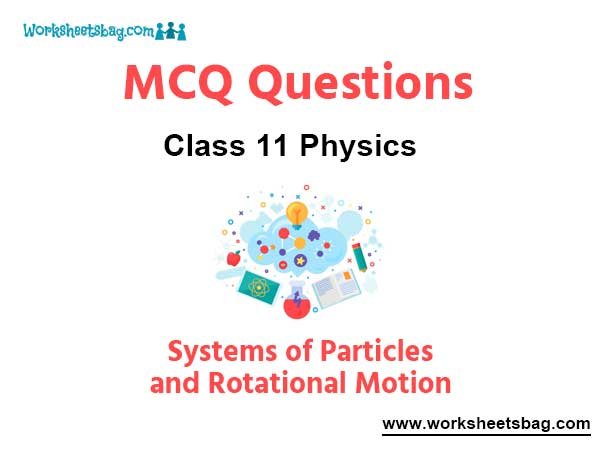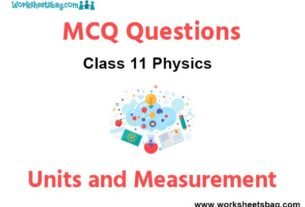Please refer to Systems of Particles and Rotational Motion MCQ Questions Class 11 Physics below. These MCQ questions for Class 11 Physics with answers have been designed as per the latest NCERT, CBSE books, and syllabus issued for the current academic year. These objective questions for Systems of Particles and Rotational Motion will help you to prepare for the exams and get more marks.
Systems of Particles and Rotational Motion MCQ Questions Class 11 Physics
Please see solved MCQ Questions for Systems of Particles and Rotational Motion in Class 11 Physics. All questions and answers have been prepared by expert faculty of standard 11 based on the latest examination guidelines.
MCQ Questions Class 11 Physics Systems of Particles and Rotational Motion
Question. ABC is a triangular plate of uniform thickness. The sides are in the ratio shown in the figure. IAB, IBC and ICA are the moments of inertia of the plate about AB, BC and CA as axes respectively. Which one of the following relations is correct?
(a) IAB > IBC
(b) IBC > IAB
(c) IAB + IBC = ICA
(d) ICA is maximum

Answer
B
Question. If the linear density (mass per unit length) of a rod of length 3m is proportional to x, where x is the distance from one end of the rod, the distance of the centre of gravity of the rod from this end is
(a) 2.5 m
(b) 1 m
(c) 1.5 m
(d) 2 m
Answer
D
Question. In carbon monoxide molecule, the carbon and the oxygen atoms are separated by a distance 1.12 × 10–10 m. The distance of the centre of mass, from the carbon atom is
(a) 0.64 × 10–10 m
(b) 0.56 × 10–10 m
(c) 0.51 × 10–10 m
(d) 0.48 × 10–10 m
Answer
A
Question. The moment of inertia of a disc of mass M and radius R about an axis, which is tangential to the circumference of the disc and parallel to its diameter, is
(a) 3/2 MR2
(b) 2/3 MR2
(c) 5/4 MR2
(d) 4/5 MR2
Answer
C
Question. Two fly wheels A and B are mounted side by side with frictionless bearings on a common shaft. Their moments of inertia about the shaft are 5.0 kg m2 and 20.0 kg m2 respectively. Wheel A is made to rotate at 10 revolution per second. Wheel B, initially stationary, is now coupled to A
with the help of a clutch. The rotation speed of the wheels will become
(a) 2√5 rps
(b) 0.5 rps
(c) 2 rps
(d) None of these
Answer
C
Question. A tube one metre long is filled with liquid of mass 1 kg. The tube is closed at both the ends and is revolved about one end in a horizontal plane at 2 rev/s. The force experienced by the lid at the other end is
(a) 4π2N
(b) 8π2N
(c) 16π2N
(d) 9.8 N
Answer
B
Question. A composite disc is to be made using equal masses of aluminium and iron so that it has as high a moment of inertia as possible. This is possible when
(a) the surfaces of the disc are made of iron with aluminium inside
(b) the whole of aluminium is kept in the core and the iron at the outer rim of the disc
(c) the whole of the iron is kept in the core and the aluminium at the outer rim of the disc
(d) the whole disc is made with thin alternate sheets of iron and aluminium
Answer
B
Question. Three identical particles each of mass 1 kg are placed touching one another with their centres on a straight line. Their centres are marked A, B and C respectively. The distance of centre of mass of the system from A is
(a) AB + AC + BC / 3
(b) AB + AC / 3
(c) AB + BC / 3
(d) AC + BC / 3
Answer
B
Question. A uniform circular disc of radius 50 cm at rest is free to turn about an axis which is perpendicular to its plane and passes through its centre. It is subjected to a torque which produces a constant angular acceleration of 2.0 rad s–2. Its net acceleration in ms–2 at the end of 2.0s is approximately :
(a) 8.0
(b) 7.0
(c) 6.0
(d) 3.0
Answer
A
Question. The moment of inertia of a body about a given axis is 1.2 kg m2. Initially, the body is at rest . In order to produce a rotational kinetic energy of 1500 J, an angular acceleration of 25 rad s–2 must be applied about that axis for a duration of
(a) 4 s
(b) 2 s
(c) 8 s
(d) 10 s
Answer
B
Question. A particle of mass m is moving in yz-plane with a uniform velocity v with its trajectory running parallel to +ve y-axis and intersecting z-axis at z = a in figure. The change in its angular momentum about the origin as it bounces elastically from a wall at y = constant is

Answer
B
Question. Fig. shows a disc rolling on a horizontal plane with linear velocity v. Its linear velocity is v and angular velocity is w. Which of the following gives the velocity of the particle P on the rim of the disc

(a) v (1 + cos π)
(b) v (1 – cos π)
(c) v (1 + sin π)
(d) v (1 – sin π)
Answer
C
Question. A toy car rolls down the inclined plane as shown in the fig. It loops at the bottom. What is the relation between H and h?

Answer
D
Question. A weightless ladder 20 ft long rests against a frictionless wall at an angle of 60º from the horizontal. A 150 pound man is 4 ft from the top of the ladder. A horizontal force is needed to keep it from slipping. Choose the correct magnitude from the following.
(a) 175 lb
(b) 100 lb
(c) 120 lb
(d) 17.3 lb
Answer
D
Question. A sphere rolls down on an inclined plane of inclination θ. What is the acceleration as the sphere reaches bottom?

Answer
A
Question. An annular ring with inner and outer radii R1 and R2 is rolling without slipping with a uniform angular speed. The ratio of the forces experienced by the two particles situated on the inner and outer parts of the ring ,F1/F2 is

Answer
C
Question. Consider a system of two particles having masses m1 and m2 . If the particle of mass m1 is pushed towards the centre of mass particles through a distance d, by what distance would the particle of mass m2 move so as to keep the mass centre of particles at the original position?

Answer
C
Question. A coin placed on a gramophone record rotating at 33 rpm flies off the record, if it is placed at a distance of more than 16 cm from the axis of rotation. If the record is revolving at 66 rpm, the coin will fly off if it is placed at a distance not less than
(a) 1 cm
(b) 2 cm
(c) 3 cm
(d) 4 cm
Answer
D


